Hey guys. I hope all of your spring gardening experiences have been as good as mine so far. Thanks to a later than usual winter, most of our plants were still completely dormant when those horrendous freezes occurred that devastated so many amazing plants elsewhere on the East Coast.
Our maple collection is beginning to exceed its available space at our residence, so we will have to begin putting in plants at a nearby farm we own. In addition, I have decided to branch out and really start making a collection of some rarities, and an Oak collection is a definite possibility in the near future. Would anyone happen to have a reference on Oak botany/taxonomy? I plan on designing the collection in terms of botanical relationships, i.e.- Section Quercus (the white oak group), etc. I was also thinking of gathering a few unusual whitebeams, which we already have a couple of. Any ideas as to what we should pursue next? I've been trying to come up with ideas for some time and I know there are some very knowledgeable posters on this board that can provide some good input.
Our collections as they are now look like this, with a few notes on performance so far. For any of you guys in cooler zones, this might give you a few ideas on what might work for you, especially in terms of maples. New arrivals this spring have asterisks. Everything else has survived at least one of our infamous central new york winters:
Maple Collection:
Acer barbinerve; Mauled by deer, a few adventitious buds are starting to appear but does not look good.
Acer campestre; Would probably survive on Mars
Acer cappadocicum ssp. lobelii; Fully hardy, very fast grower, nice glossy foliage and yellow f/c; don't know why it isn't comonly planted?
Acer carpinifolium*
Acer ukurunduense; Sprouting back after being nearly killed in a drought year (the year it was planted). Nice red twigs and yellow f/c.
Acer circinatum*
Acer davidii ssp. grosseri*
Acer distylum*; Interesting shade of pink on leafout
Acer griseum; Badly damaged by tent caterpilars last year and in recovery mode, but doing well.
Acer griseum x pseudoplatanus*; Putative hybrid that to my knowledge has yet to be published; Obtained from forestfarm; it is advertised on Esveld's page and our plant looks identical to theirs; supposedly a slow grower but grew 8 inches before anything else even leafed out! If anyone knows more about this plant and/or its origins, let me know!
Acer henryi; Bright blue-green stems and gorgeous scarlet f/c. Ours might actually be Acer cissifolium, as the leaflets are deeply serrated, or are just reflecting the juvenile nature of our plant. Some sunscald on south-facing trunk and branches (as can be expected when you don't protect it during the winter!)
Acer longipes*; nice red color on leaf-out; looks very similar to our Acer pictum and A.c. lobelii.
Acer mandshuricum; nice red color on leaf out; no chlorosis despite growing on limestone.
Acer miaotaiense; Vigorous, nice yellow f/c. Leaves look very much like deeply-cut Acer miyabei. Fully hardy here in an exposed location.
Acer monspessulanum ssp. cinerascens; Weak grower. This is a relatively high-precip area and might just be too wet for this plant, which comes from the middle east. Leaves tiny, leathery; come out red and then turn reddish-orange in autumn.
Acer oliverianum*
Acer palmatum*; I've never seen just a normal, green, baseline example of the palmatum species. Now I have one.
Acer pectinatum ssp. laxiflorum*; Attractive snake-like bark; slow to leaf out; ours is grafted to ensure the purity of the subspecies.
Acer pensylvanicum; New arrival and not yet much to report. Wild collected from private land from a group of exceptionally blue-green colored plants in the Old Forge area of the Adirondack Mountains where lows can supposedly approach -50.
Acer pictum; still recovering from a drought year that nearly killed it. Looks great this year, leafed out red-purple and is fading to green. Fall colors have been red, orange, and yellow- all at the same time!
Acer pseudosieboldianum*
Acer robustum; Was fully hardy before a deer walked by and decided to snip it to within 4 inches of the soil. Is currently sprouting back vigorously with typical japanese-type maple leaves, green stems, and scarlet f/c
Acer rufinerve; Our most vigorous plant, gorgeous bark with red-violet and orange fall colors. The most attractive plant in our collection to date.
Acer stachyophyllum; Was a fully hardy, 6' tree before a deer snipped it to ground level. Suckering like crazy and starting to once again become a respectable plant. Unusual leaf shape for a maple and good red-violet f/c.
Acer sterculiaceum ssp. franchetii; Vigorous plant with big fuzzy leaves; fall color is minimal, yellowish, but it provides a striking contrast to the other maples wih its stout twigs and bold foliage.
Acer tegmentosum; early to leaf out and sometimes damaged, otherwise exceptional. Vigorous, with scarlet bark in the winter and orange foliage in the fall.
Acer triflorum; had a nasty run in with my father's lawn mower last year but is coming back. Definitely needs acid supplements and will turn chlorotic otherwise. Our soil is neutral to slightly acid, but overlays limestone, so this plant and some of the snakebarks rely on miracle grow acid fert for nourishment.
Miscellaneous plants:
Pteroceltis tartarinowii; vigorous, but no means of protection has yet succeeded in guarding it against the rabbits and it is constantly being kept in a sprout-back state. One of these years it will break out for good, hopefully. Yellow f/c.
Juglans regia (Carpathian strain); We have 3, and it is a struggle to get them to produce good growth that is not immediately attacked by seemingly all surrounding forms of wildlife. Otherwise does well and is an attractive plant.
Corylus avellana 'Heterophylla'; New this spring, but I really like the foliage, despite what Dirr says about it in his Manual.
Parrotiopsis jacquemontiana; A nice plant, but has exhibited some dieback. probably not fully hardy here.
Euptelea polyandra*
Sorbus graeca*; New; can't find much information on it; apparently the rabbits enjoy it, since they saw fit to snip it down to the ground. There's some nice buds appearing on it though, so hopefully I will have more to report on it next spring.
Calycanthus x raulstonii 'Hartlage Wine'* Cannot overemphasize how exceptionally vigorous this plant is; ordered 2 to replace some arborvitaes growing on each side of the front of our house, and one has grown nearly 10 inches and already bloomed (keep in mind most plants are just breaking bud here). The blooms are spectacular and about 3x the size of a seedling Calycanthus floridus we have.
Pyracomeles vilmorinii; Interesting glossy, ferny leaves. Exceptionally vigorous. Died back to snowline this year, despite a low of only about -8F. It had survived lows of at least -18F in the recent past. It stays evergreen to about -15F, but the foliage usually gives up in about February. Leafs out fine the next spring though. Has yet to bloom here. Has a very nice, "alive" feel to it when everything else here has been long-dormant.
Sorbus latifolia; new last year, still establishing; yellow-orange fall color. Leaves are gray-felted below and contrasts strongly to everything else growing nearby. Just starting to come out. Another favorite of the local wildlife but doing well. Fully hardy through last winter. I lost my first one to the drought that damaged so many of the maples.
Kalopanax septemlobus; despite a reputation for being slow-growing, this has been really vigorous. The deer and tent-caterpilars won't touch it, at least not more than once. The plant was crawling with the caterpillars last year, but killed every bug that munched on it (insecticidal properties)? It is absolutely covered with thorns that would be the envy of any wild Rose. Neat foliage and overall texture, but no real fall color to speak of.
Betula maximowicziana*
Platycarya strobilacea*
Sorbus pallescens*
Davidia involucrata*
Zanthoxylum simulans*
All of these are still babies, but have survived a winter (granted, with snow cover) and look good.
Emmenopterys henryi* A real experiment, probably won't survive but is too neat of a plant not to try it out.
Magnolia grandiflora 'Bracken's Brown Beauty'* Going in a very special, sheltered spot on our residence. For all you other folks in cold climate areas, I'll keep you updated on its performance.
Quercus dentata 'Pinnatifida'*; This plant is the "seed" of our new Oak collection. I figured there was no better way to start out than an exceptionally rare and unusual cultivar from an already uncommon species.
There you have it, that's what we have. I would be happy to hear any ideas on where to go next. It's the best time of the year in Syracuse right now. Happy gardening!


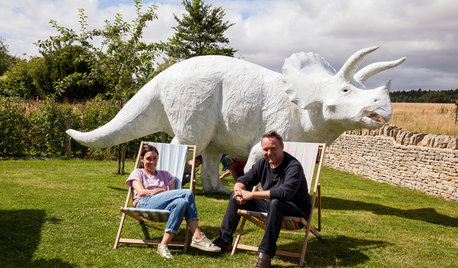
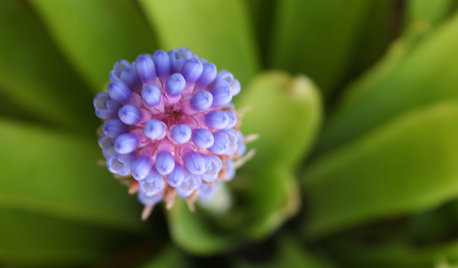

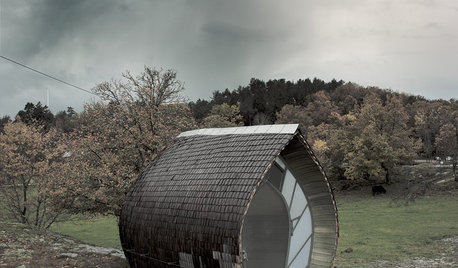
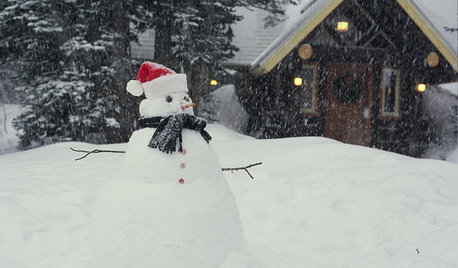
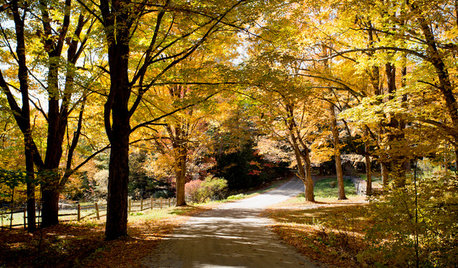








pineresin
quirkyquercus
Related Discussions
HAVE: Rare Tropical Palm Trees
Q
all conifers are trees.. but not all trees are conifers ...
Q
Calling all Garden Book readers
Q
Calling all N.FL. & Central FL rebels!
Q
vancleaveterry
lkz5ia
pineresin
basic
cacau
pteroceltisOriginal Author
pineresin
cacau
giboosi_alttara
krazyaroider
vancleaveterry
arbordave (SE MI)
ivyzmama
vancleaveterry
vancleaveterry
slimwhitman
pmcrim_gmail_com
slimwhitman
ozark
r9brown99
davidrt28 (zone 7)
rhizo_1 (North AL) zone 7